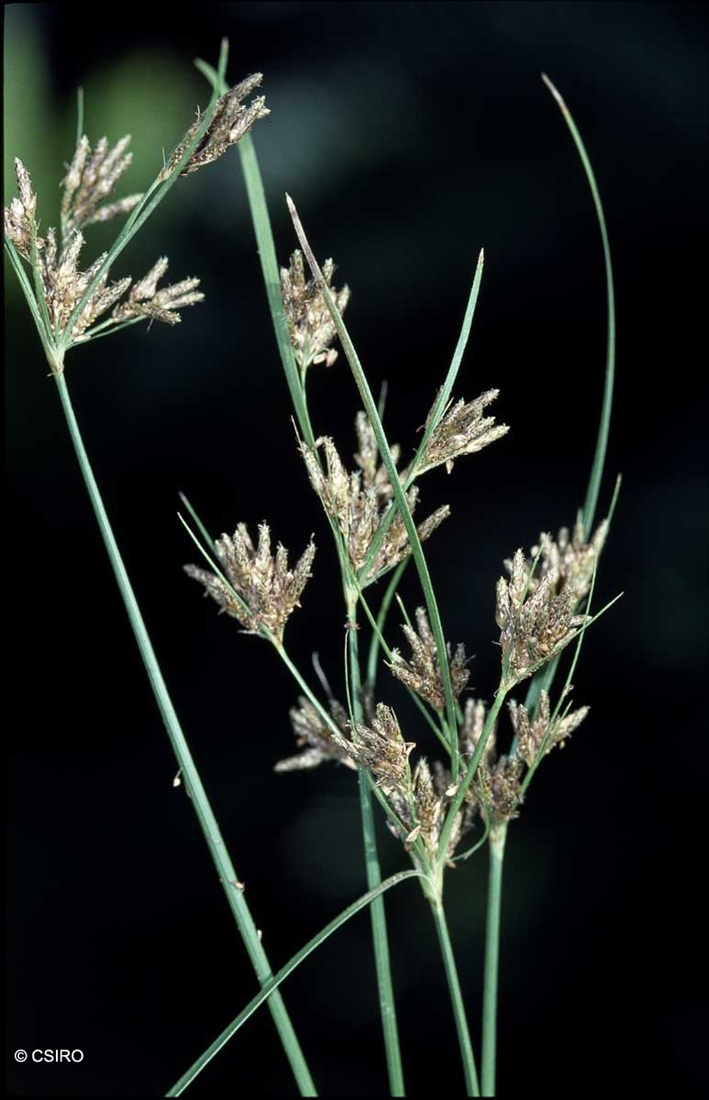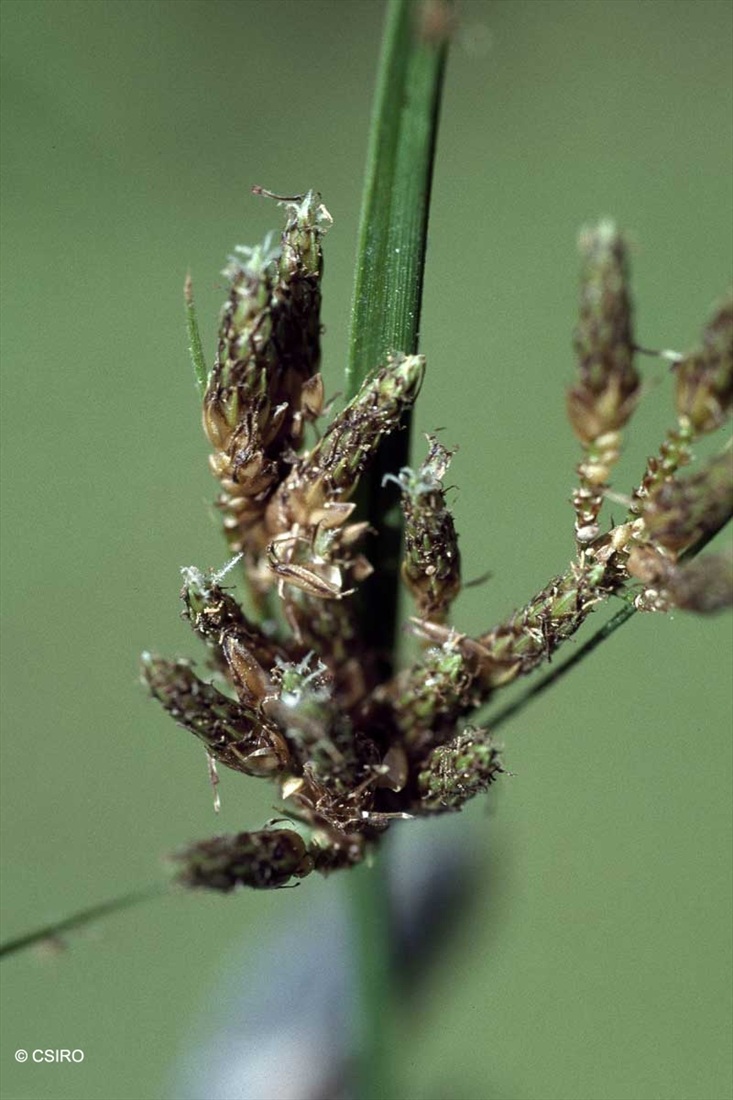Australian Tropical Rainforest Plants - Online edition
Fimbristylis dichotoma (L.) Vahl




Vahl, M.H. (1805) Enumeratio Plantarum 2: 287.
Common fringe sedge
Tufted perennial with very short rhizome. Culms slender to rather stout, compressed, 10-75 (rarely to 100) cm high, 1-2 mm diam.
Inflorescence consists of 3-4 umbellate clusters of spikes on a peduncle. Each cluster subtended by linear leaf-like bracts up to 200 mm long. Spikes 8-14 mm long, the flowers spirally arranged. Glumes glabrous, brownish, ca. 3 x 1.5 mm, keel green consisting of 3 veins and area on sides of keel glossy, smooth and reddish brown. Anthers about 0.5 mm long. Rachilla strongly winged. Ovary obovoid, about 0.5-0.8 mm long. Style narrowed, articulate at the apex of the ovary, slightly enlarged, flattened and hairy at the apex. Stigmas 2.
Nut biconvex, obovoid or broad-obovoid, shortly stipitate, 0.7-1.3 x 0.6-1 mm, smooth or sparsely verruculose, conspicuously trabeculate by 5-10 (rarely more) longitudinal ribs on either face and numerous cross-bars, glistening white to pale yellow, rarely yellow-brown, with epidermal cells transversely elliptic to oblong.
Features not available.
Occurs in WA, NT, CYP, NEQ, CEQ and widespread through much of Australia. Altitudinal range from near sea level to 1160 m. Grows in moist places along paths and roads in rainforest, also in rianforest margins, Eycalypt forest, Melaleuca forest and in moist places in various types of woodland and wooded grassland. Also occurs in all warmer parts of the world.
Tends to become a weed of cultivation (Kern 1974).





